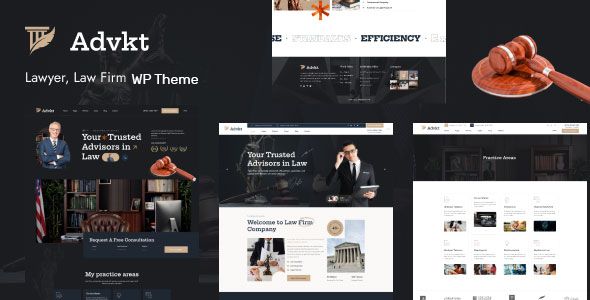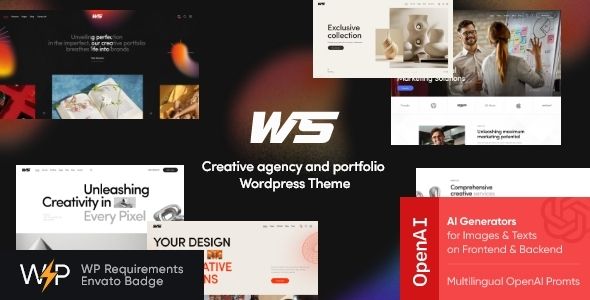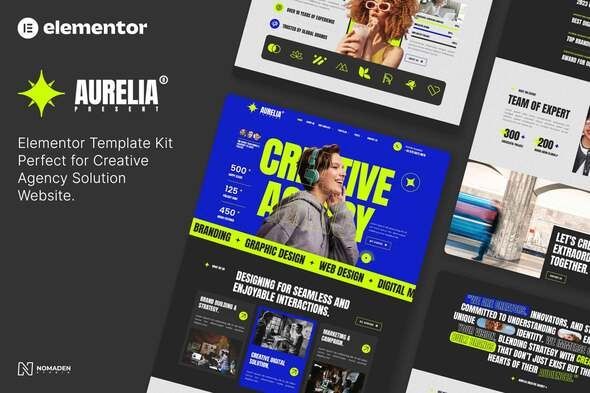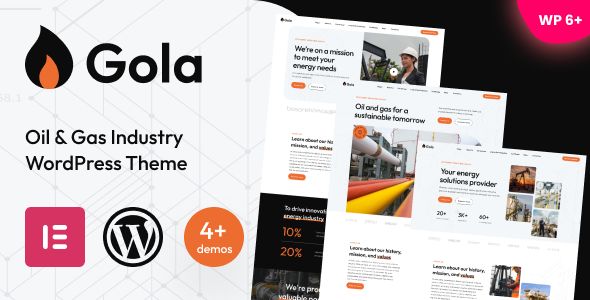Maiko – Architecture and Interior Design WordPress Theme

- Description
- Reviews
- FAQ

You’re getting a GPL-licensed build of Maiko – Architecture and Interior Design WordPress Theme that you can install on unlimited sites, with all Pro features included, and syncs with the official release track—no per-domain activations or nag screens. In practical terms: build locally, push to staging, go live, and clone the same foundation for your next studio or client project. It’s ready to use after install, so you can focus on form, light, and space—not license hurdles. A detailed FAQ is included below.
Who Maiko is really for
If your work lives at the intersection of geometry and people—architecture studios, interior designers, boutique build firms, design–build teams, renovation specialists, and real estate developers with strong visual brands—Maiko – Architecture and Interior Design WordPress Theme gives you the structure to present your projects with dignity. It avoids gimmicks and leans into a timeless grid, controlled whitespace, and a visual rhythm that lets plans, renders, and site photography lead the story. For agencies, the GPL freedom means you can roll it out across multiple studios, sub-brands, or competition microsites without worrying about license logistics every time you duplicate a site.
Why start with a discipline-specific theme
Yes, a minimal multipurpose theme can be skinned to look architectural. But Maiko – Architecture and Interior Design WordPress Theme solves the details that consume time on design portfolios: alternating image/text templates that respect aspect ratio, case-study scaffolds with scope and constraints, drawing-friendly lightboxes, material and finish callouts, and elegant typography that stays crisp on high-density displays. It’s opinionated where it helps (grid, rhythm, project cards, captions) and flexible where it should be (color tokens, type scales, layout blocks).
A design system that reads “studio-grade”
Architecture and interior design are judged at a glance. Maiko’s visual language is deliberately quiet:
-
Measured whitespace that breathes around imagery; grid systems that keep captions aligned without fuss.
-
Type scales optimized for plan notes and dense captions—small sizes remain legible, large scales never look shouty.
-
Neutral palettes with accent tokens for hover states and project tags; easy to re-skin for monochrome or warm editorial tones.
-
Project hero patterns that support full-bleed photographs or framing whitespace for renders and diagrams.
-
Considered motion—gentle transitions, no heavy parallax that calls attention to itself.
The result is a site that acts like a gallery wall: the work is the subject; the theme is the lighting and the frame.
Portfolio structure that matches how studios actually present work
Maiko – Architecture and Interior Design WordPress Theme ships with templates that cover common studio needs:
-
Collection pages that group work by typology (residential, hospitality, workplace, cultural, education, retail) or by status (concept, under construction, completed).
-
Case study pages with sections for problem/brief, site constraints, concept drivers, program, materials, and outcome; optional timelines and team credits.
-
Drawings and diagrams inside a lightbox that respects linework—no over-compression that smears fine detail.
-
Before/after and phasing patterns for renovations, fit-outs, and adaptive reuse.
-
Press & awards ribbons for credibility without clutter.
-
Client testimonials styled like pull quotes, not sales banners.
Everything uses simple building blocks so you can compose long-form narratives or compact, image-forward pages with crisp captions.
Page building without lock-in
Whether your team prefers Gutenberg for longevity or Elementor for speed, Maiko stays out of your way:
-
Block patterns for heroes, project grids, image sequences, split sections, specification lists, FAQ accordions, and contact CTAs.
-
Section library for quick assembly: studio bios, team rosters, press lists, services matrices, awards, recruitment pages.
-
Global styles for color and type—swap palettes and heading scales once, propagate everywhere.
-
Header/footer presets from ultra-minimal (logo + hamburger) to studio-grade nav with Projects/Studio/News/Contact.
Because the package is GPL-licensed, you can carry your preferred component library from site to site, and keep code customizations in a child theme for clean updates.
Performance with big images (and why it still matters)
Architectural imagery is heavy. Maiko – Architecture and Interior Design WordPress Theme is built to cooperate with modern performance practices:
-
Responsive srcset image markup so browsers choose the right size for each device.
-
Lazy-loading below-the-fold galleries.
-
Lean CSS/JS so your grid and lightbox don’t drag.
-
Friendly to caching and image-optimization plugins.
-
Sensible motion defaults that don’t punish mid-range phones.
You can keep full-bleed project heroes and still land healthy Core Web Vitals by exporting at realistic pixel widths, using modern formats where appropriate, and resisting heavy animation.
Information architecture that supports SEO without diluting the brand
Design firms often fear SEO because it can read like marketing fluff. Maiko’s structure keeps things honest:
-
Project taxonomies (typology, status, location, year) enable filtered views and logical internal links.
-
Service pages (architecture, interiors, urban design, visualization, project management) with restrained copy and clear CTAs.
-
Studio pages for philosophy, process, team, clients; optional careers with role cards.
-
News/Journal templates for competition entries, site progress, publications, and lectures—light editorial styling.
-
Schema-friendly blocks for organization and FAQ so search engines understand basics without you writing awkward content.
Write like a studio, not a brochure. The theme gives you structure; you provide the substance.
Accessibility and reading ergonomics
Good accessibility is good editorial design. Heading orders are logical; focus states are visible; contrast is tuned for text-on-white and image overlays. Tap targets are generous on mobile, and galleries respond to keyboard navigation. That improves reach (and client approval) without compromising the aesthetic.
Multilingual and RTL
Maiko – Architecture and Interior Design WordPress Theme is translation-ready and includes RTL styling so right-to-left languages render correctly. If you maintain bilingual sites, the navigation and project taxonomies handle mirrored content gracefully.
Contact, proposals, and lead capture that respect attention
Design buyers are busy. Keep your touchpoints elegant:
-
Short contact forms on project and service pages (name, email, message) with optional “Share your brief” upload.
-
RFP pages for developers or institutional clients (budget range, timeline, program outline).
-
Studio CTAs that stay minimalist: “Contact,” “Request portfolio PDF,” “Book an intro call.”
-
Optional newsletter blocks that behave like press bulletins, not discount popups.
Clean labels, no distractions, and accessible error states. It’s more likely to earn replies than a pushy sales funnel.
Content ideas that elevate the portfolio
-
Process essays: concept drivers, material choices, sustainability moves that changed the design.
-
Construction diaries: site progress with sequencing photos; it humanizes delivery.
-
Explainers: daylight strategies, acoustic targets, lifecycle considerations—write for clients, not critics.
-
Material primers: oak vs ash, terrazzo mixes, acoustic plaster—why each was chosen.
-
Neighborhood context: how the project met heritage overlays or streetscape goals.
-
Post-occupancy reflections: what worked, what you’d refine; authenticity builds trust.
Each fits Maiko’s journal and case-study templates so you can publish without inventing new layouts every time.
Installation (predictable and quick)
-
Upload & activate the theme via Appearance → Themes → Add New → Upload Theme.
-
Install suggested plugins when prompted (builder, forms, any companion module).
-
Import the demo closest to your practice (boutique studio, interiors-led, mixed-use portfolio).
-
Set Home & Blog, assign menus; adjust global colors and type scales.
-
Replace demo assets with your photography and drawings; keep consistent aspect ratios within galleries.
-
Customize project taxonomies (typology/status/location/year) to match your studio language.
-
Wire forms and test deliverability; set reply-to addresses that reach partners, not generic inboxes.
-
Enable caching & image optimization; verify mobile performance.
-
Walk through with your team; remove placeholder sections you don’t need.
With no activation prompts or per-domain keys, staging → production is stress-free, and hand-offs to clients remain clean.
Updating without breaking your gallery wall
This package syncs with the official release line. Best practice:
-
Back up files and database.
-
Update on a staging copy.
-
Verify headers, footers, project templates, lightboxes, and forms.
-
Re-measure Core Web Vitals if a page builder updates.
-
Keep custom PHP or template overrides in a child theme.
You’ll get improvements and security fixes with minimal layout drift.
Real-world deployment patterns (agency-friendly)
-
Studio + competition microsites: one brand system, multiple sites for juries with condensed navigation and project subsets.
-
Parent brand + location sites: share components; swap palettes, languages, and project selections by region.
-
Exhibition minisite: a temporary portfolio for a show or award submission using Maiko’s case-study scaffold.
-
Developer pitch sites: locked pages with tailored project sets and minimal copy; same base components.
GPL freedom makes these patterns viable without extra licensing overhead.
Photography, drawings, and file hygiene
-
Export images at realistic widths (e.g., 1600–2000 px for full-bleed) and maintain consistent ratios across a gallery.
-
Use modern formats where helpful; keep vector logos/SVG crisp.
-
Don’t flatten linework too aggressively; drawings need careful compression.
-
Caption deliberately: location, typology, year, photographer, team credits.
-
Curate. A strong nine-image sequence beats twenty similar angles.
Maiko’s galleries and lightbox respect these choices so detail reads cleanly.
Studio pages that feel credible
Use the studio area to show how you think, not just what you’ve done:
-
Philosophy: a concise statement about how you approach context, material, light.
-
Process: a simple timeline from briefing to post-occupancy—keep it human.
-
Team: portraits that match your brand mood (consistent background, natural light).
-
Clients: case-appropriate logos or a tasteful list—no visual shouting.
-
Press & talks: scanned spreads or linkable mentions summarized elegantly.
-
Careers: role cards with expectations and how to apply.
All of this fits Maiko’s calm editorial style.
Common pitfalls Maiko helps you avoid
-
Overdecorated portfolio pages that fight the work—Maiko stays quiet.
-
Inconsistent grid across project cards—global settings keep rhythm.
-
Crushed drawings—lightbox + export guidance preserve linework.
-
Bloated scripts—lean assets and cooperative performance defaults.
-
License interruptions during hand-offs—GPL-licensed package avoids them.
Pre-launch checklist (save yourself a weekend)
-
Replace all demo copy and images.
-
Check mobile nav, sticky header behavior, and search results.
-
Validate forms, reply-to addresses, and spam prevention.
-
Confirm taxonomy filters and project sorting.
-
Ensure alt text on key imagery; caption credits consistently.
-
Audit page titles and meta descriptions; keep them studio-plain.
-
Compress hero images and test on a real device over cellular.
-
Add a minimal 404 and search page with helpful next steps.
-
Create a press kit page with logo assets and studio facts.
-
Set up analytics and goal tracking on contact buttons and forms.
Long-term maintenance
-
Update WordPress, the theme, and plugins on a schedule; stage first.
-
Back up nightly; test restore quarterly.
-
Keep code edits in a child theme; design tweaks via global styles and blocks.
-
Review Core Web Vitals after major updates.
-
Re-curate the homepage grid seasonally; prune weak images.
Fewer moving parts means more time designing.
FAQ
Q1: What exactly do I get with this GPL-licensed package of Maiko – Architecture and Interior Design WordPress Theme?
The complete theme, all premium demos/sections, importer tools, theme options, and updates that sync with the official release. You can install it on unlimited sites—production, staging, and client domains included.
Q2: Will I see activation popups or per-domain license checks?
No. The package is ready to use after install. Import demos, build pages, and hand off to clients without interruptions.
Q3: Does Maiko require a specific page builder?
No. It ships with polished patterns for native WordPress blocks and includes section templates compatible with popular builders. Choose the stack you maintain best.
Q4: Is Maiko suitable for both architecture and interior design portfolios?
Yes. The project scaffolds support built work, interiors, concept studies, and documentation. You can tag by typology and status to organize both disciplines.
Q5: How does Maiko handle large image sets and drawings?
Galleries, lightbox, and responsive image markup protect quality while staying efficient. Use consistent aspect ratios and export carefully; the theme does the rest.
Q6: Can I present long-form case studies with diagrams and captions?
Absolutely. Use split sections for narrative, image sequences for diagrams, and caption blocks for credits and materials.
Q7: Does it support multilingual sites and RTL?
Yes—translation-ready with RTL styling so right-to-left languages render correctly.
Q8: What’s the safest update workflow?
Back up, update on staging, verify headers/footers, project templates, forms, and performance metrics, then push to production. Keep PHP overrides in a child theme.
Q9: Can I publish press coverage and awards without breaking the aesthetic?
Yes. Maiko includes press/award components styled with restraint so lists look editorial, not salesy.
Q10: How should I structure the navigation for a small studio?
Keep it minimal: Projects, Studio, Journal, Contact. Add Services only if you truly write them well; otherwise fold into Studio.
Q11: Does Maiko play nicely with SEO plugins and structured data?
Yes. Clean heading hierarchies and schema-friendly blocks make it easy to add organization and FAQ markup.
Q12: Can I restrict access to private pitches or competition entries?
Use password-protected pages or private post statuses; Maiko’s layouts work fine behind a simple gate.
Q13: Will animations distract from the work?
Defaults are quiet. If you add motion, keep durations short and easing subtle; architectural content should feel stable.
Q14: How do I avoid inconsistent project grids?
Set a global card ratio and image crop rules, then stick to them. Maiko’s grid system keeps rhythm across viewports.
Q15: Can I run Maiko for multiple brands from one code base?
Yes. Share the parent theme; give each brand a child theme with palettes, type scales, and logo variations.
Q16: What if demo import times out on a small host?
Import in parts or skip media first, then upload images manually. Temporarily raise PHP memory/execution time; revert after.
Q17: Is Maiko usable for agencies building many portfolio sites?
It’s ideal. GPL licensing removes per-site friction, and consistent components reduce build time across clients.
Q18: Can I add a recruitment page with role cards?
Yes. Use list blocks or prebuilt role cards with responsibilities, location, and application instructions.
Q19: Does Maiko support light and dark modes?
You can create dark-leaning palettes via global styles; ensure image selections suit the chosen background.
Q20: How do I keep the journal from looking like filler?
Publish real process notes, construction updates, and talks—short, honest entries photographed well. Quality over frequency.
Final thoughts
A portfolio is a promise. Maiko – Architecture and Interior Design WordPress Theme gives you a calm, confident stage to keep that promise: a typographic system that respects detail, project scaffolds that tell the right story, and galleries that display drawings and photography with care. The GPL-licensed package means you can deploy on unlimited sites, with all Pro features intact and updates synced to the official line. Build once, refine, repeat—without license friction or layout gymnastics.
Q: Do I need a license key?
A: No. All products are Pre-Activated. You can use 100% of the Premium features immediately.
Q: Can I use the One-Click Demo Import?
A: Yes, absolutely! We ensure the demo import feature works perfectly.
Q: Can I use the products on multiple websites?
A: Absolutely. The GPL license allows use on unlimited domains.
Q: Are the files safe?
A: Yes. All files are scanned by McAfee and VirusTotal before uploading.
Share Now!


















